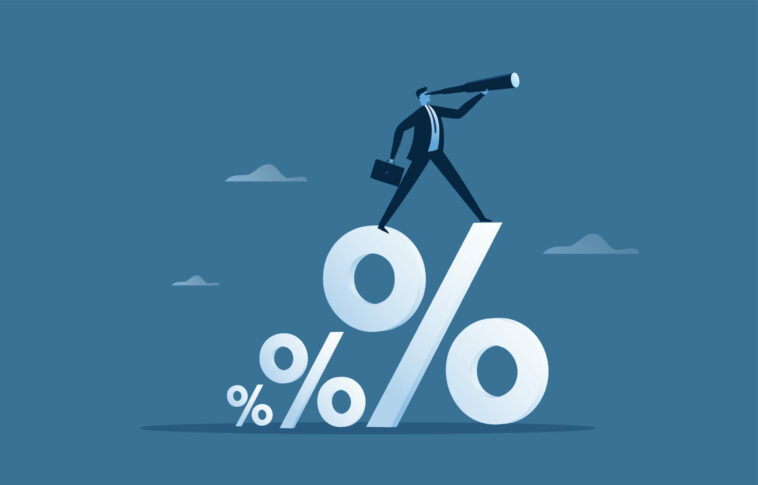Interest rates play a pivotal role in the world of finance, influencing everything from borrowing costs to savings growth. Whether you are applying for a loan, opening a savings account, or considering an investment, understanding interest rates is crucial to making informed financial decisions. In this comprehensive guide, we will explore interest rates, how they work, factors influencing them, their impact on borrowing and saving, and essential considerations for managing your finances effectively.
What are Interest Rates?
Interest rates represent the cost of borrowing money or the return earned on savings and investments. When you borrow money, you are charged interest, which is a percentage of the loan amount. On the other hand, when you save money or invest, interest is the amount you earn over time on your initial deposit or investment.
Types of Interest Rates
There are various types of interest rates, each serving specific purposes:
1. Fixed Interest Rates
Fixed interest rates remain constant throughout the loan or investment term. Borrowers and savers enjoy predictability, as their interest payments or earnings do not change, regardless of market fluctuations.
2. Variable Interest Rates
Variable interest rates can fluctuate based on changes in the market or benchmark interest rates. Borrowers and savers may experience changes in their interest payments or earnings over time.
3. Compound Interest Rates
Compound interest rates are applied to the initial deposit or principal amount and any interest accumulated over time. As interest is added to the principal, the total balance grows, leading to exponential growth in savings or debt.
4. Simple Interest Rates
Simple interest rates are applied only to the initial principal amount and do not take into account any interest earned or charged over time. As a result, the growth of savings or debt is linear rather than exponential.
Factors Affecting Interest Rates
Interest rates are influenced by a variety of factors, including:
1. Central Bank Policies
Central banks, such as the Federal Reserve in the United States, influence interest rates through monetary policies like setting the benchmark interest rate. Changes in the benchmark rate can have a cascading effect on various other interest rates in the economy.
2. Inflation
Inflation rates impact interest rates, as lenders seek to maintain the purchasing power of their money. When inflation is high, lenders may charge higher interest rates to compensate for the erosion of the loan’s value over time.
3. Creditworthiness
Borrowers’ creditworthiness is a significant factor in determining interest rates on loans. Those with higher credit scores and stronger credit histories typically qualify for lower interest rates, as they are perceived as lower risk borrowers.
4. Market Conditions
Interest rates can also fluctuate based on supply and demand dynamics in the financial markets. Changes in market conditions, economic outlook, and investor sentiment can impact interest rates on loans and investments.
Impact of Interest Rates on Borrowing and Saving
Interest rates have significant implications for borrowers and savers:
1. Borrowing Costs
High interest rates on loans result in higher borrowing costs for consumers and businesses. This can impact affordability and the total cost of loans over time. Lower interest rates can make borrowing more accessible and reduce the overall expense of loans.
2. Savings Growth
Higher interest rates on savings accounts and investments lead to faster savings growth and higher returns for savers and investors. Conversely, low interest rates may offer lower returns on savings, potentially affecting long-term financial goals.
3. Investment Decisions
Interest rates influence investment decisions as investors consider the potential returns on different assets. When interest rates are high, fixed-income investments may be more attractive, while low interest rates may encourage investors to seek higher-yielding opportunities.
4. Economic Stimulus
Central banks may adjust interest rates as a tool to stimulate or control economic growth. Lowering interest rates can encourage borrowing and spending, while raising interest rates can curb inflation and excessive borrowing.
Essential Considerations for Managing Interest Rates
To effectively manage interest rates and make sound financial decisions, consider the following:
1. Monitor Market Trends
Stay informed about changes in interest rates and market conditions to make timely decisions regarding loans, investments, and savings strategies.
2. Compare Loan and Savings Options
When borrowing, compare loan offers from different lenders to find the most favorable interest rates and terms. Similarly, explore various savings and investment options to maximize potential returns.
3. Consider Long-Term Financial Goals
Align interest rate decisions with your long-term financial goals. For example, choose fixed-rate loans if stability is a priority, or explore high-yield savings accounts for long-term savings growth.
4. Build and Maintain Good Credit
Maintaining a strong credit history and high credit score can open doors to more favorable interest rates on loans and credit products.
Conclusion
Interest rates are fundamental components of the financial landscape, influencing borrowing costs, savings growth, and investment decisions. Whether applying for a loan, seeking the best savings options, or making investment choices, understanding interest rates is essential for making informed financial decisions.
By staying informed about market trends, comparing loan and savings options, and aligning decisions with long-term financial goals, individuals can effectively manage interest rates and make choices that support their overall financial well-being.



